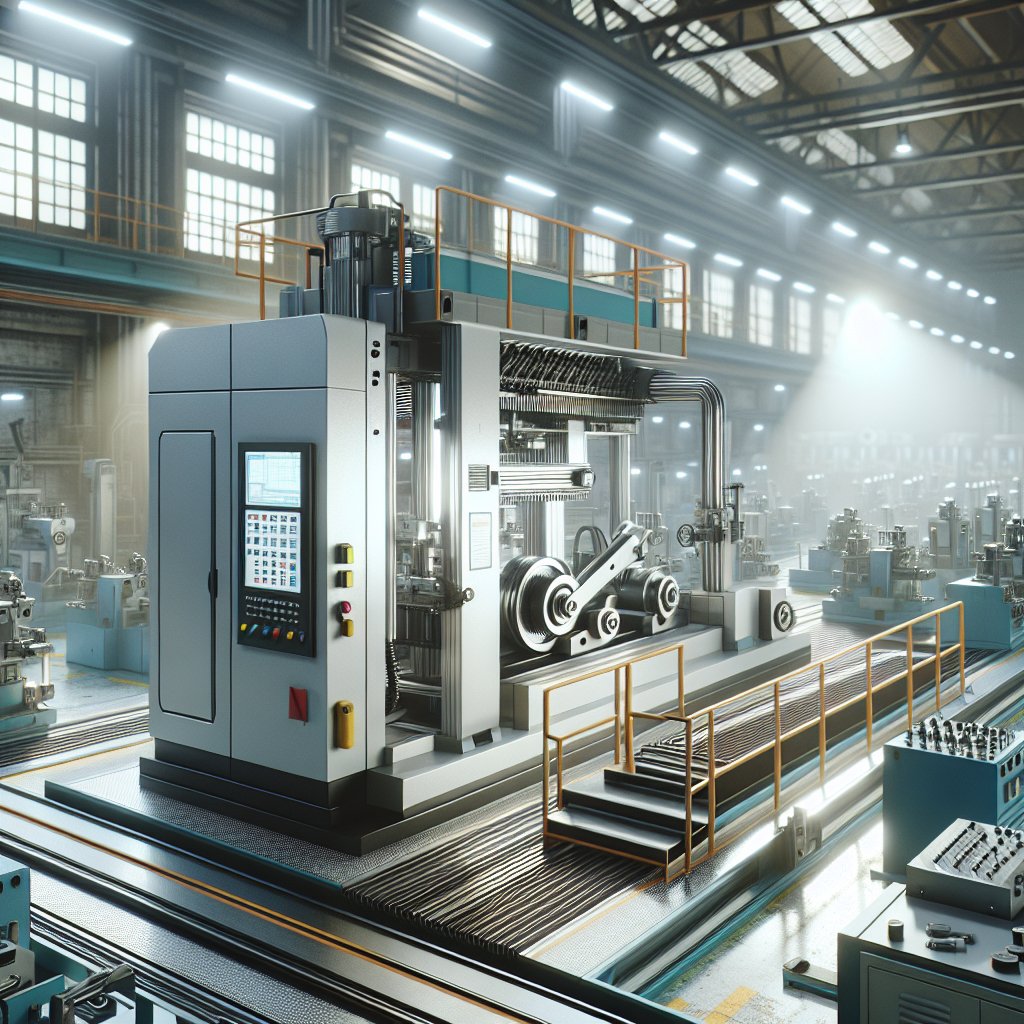
In the realm of industrial machine design, the focus on ergonomics and safety has never been more pronounced. As industries evolve, the demand for machines that not only enhance productivity but also ensure the well-being of operators is paramount. This article delves into the key trends shaping the future of industrial machine design, emphasizing the critical aspects of ergonomics and safety.
Understanding Ergonomics in Machine Design
Ergonomics, often referred to as human factors engineering, is the science of designing machines and systems that align with the physical and cognitive abilities of humans. In industrial settings, the application of ergonomic principles is crucial to minimize the risk of injury and enhance operator efficiency. The integration of ergonomics into machine design involves a comprehensive understanding of human anatomy, physiology, and psychology.
One of the primary goals of ergonomic design is to reduce the physical strain on operators. This is achieved by designing machines that accommodate a wide range of body sizes and shapes, allowing for adjustable components such as seats, control panels, and work surfaces. By doing so, operators can maintain a neutral body posture, reducing the risk of musculoskeletal disorders.
Moreover, cognitive ergonomics plays a significant role in machine design. It involves designing interfaces and controls that are intuitive and easy to use, minimizing the cognitive load on operators. This includes the use of clear labeling, logical control layouts, and feedback systems that provide operators with real-time information about machine status and performance.
Safety Innovations in Industrial Machine Design
Safety is a paramount concern in industrial environments, where the potential for accidents and injuries is high. Modern machine design incorporates a variety of safety features and technologies to protect operators and prevent accidents. One of the most significant trends in this area is the integration of advanced sensor technologies.
Sensors are used to monitor various parameters such as machine speed, temperature, and pressure, providing real-time data that can be used to prevent hazardous situations. For example, proximity sensors can detect the presence of an operator near a machine and automatically slow down or stop the machine to prevent accidents. Similarly, pressure sensors can detect abnormal pressure levels and trigger alarms or shut down the machine to prevent equipment failure.
Another key trend in safety is the use of automation and robotics. Automated systems can perform tasks that are dangerous or repetitive, reducing the risk of injury to human operators. Robotics can also be used to handle heavy loads, minimizing the risk of strain injuries. Additionally, the use of collaborative robots, or cobots, is on the rise. These robots are designed to work alongside humans, equipped with safety features such as force sensors that detect human contact and stop the robot’s movement to prevent injury.
Human-Centered Design Approach
The human-centered design approach is gaining traction in industrial machine design, focusing on the needs and limitations of the end-users. This approach involves involving operators in the design process, gathering feedback, and iterating designs based on user input. By prioritizing the user experience, designers can create machines that are not only safe and efficient but also user-friendly and satisfying to operate.
Prototyping and user testing are essential components of the human-centered design process. By creating prototypes and conducting user tests, designers can identify potential issues and make necessary adjustments before the final product is manufactured. This iterative process ensures that the final design meets the needs of the operators and enhances their overall experience.
Regulatory Compliance and Standards
Compliance with regulatory standards is a critical aspect of industrial machine design. Various organizations, such as the Occupational Safety and Health Administration (OSHA) and the International Organization for Standardization (ISO), have established guidelines and standards to ensure the safety and ergonomics of industrial machines. Adhering to these standards not only ensures the safety of operators but also helps manufacturers avoid legal liabilities and penalties.
Designers must stay informed about the latest regulations and standards, incorporating them into the design process from the outset. This includes conducting risk assessments, implementing safety features, and providing comprehensive documentation and training for operators. By prioritizing regulatory compliance, manufacturers can ensure that their machines meet the highest safety and ergonomic standards.
Future Trends and Innovations
As technology continues to advance, the future of industrial machine design holds exciting possibilities. The integration of artificial intelligence (AI) and machine learning is expected to revolutionize the industry, enabling machines to learn from data and optimize their performance autonomously. AI-powered systems can predict maintenance needs, identify potential safety hazards, and adapt to changing conditions, enhancing both safety and efficiency.
Virtual reality (VR) and augmented reality (AR) are also poised to play a significant role in machine design. These technologies can be used for training operators, allowing them to practice operating machines in a virtual environment before working with real equipment. This not only improves operator skills but also reduces the risk of accidents during the learning phase.
In conclusion, the focus on ergonomics and safety in industrial machine design is driving innovation and shaping the future of the industry. By prioritizing the well-being of operators and leveraging advanced technologies, manufacturers can create machines that are not only efficient and productive but also safe and user-friendly. As these trends continue to evolve, the industrial landscape will become increasingly focused on creating environments that prioritize human health and safety.

